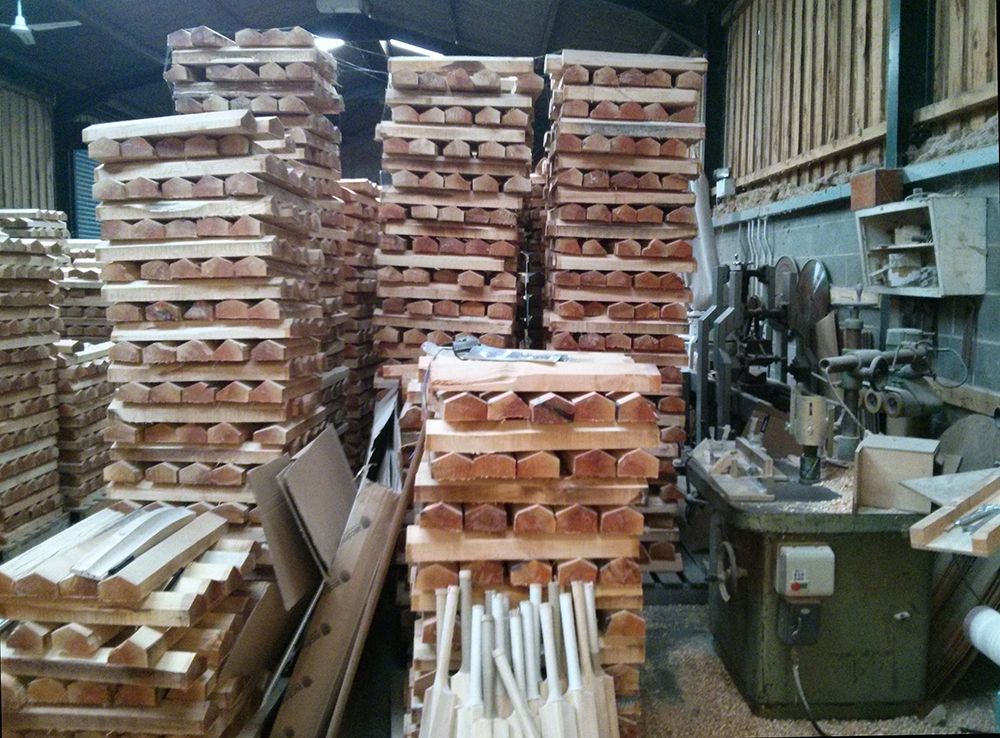Ok So me And Ryan Decided to Visit Kippax as they are on our door step and we have never been, and as it turns out one of Ryans old friends works there.
Now i no very little about Kippax ive seen a fair few bats over my time that have been Kippax some have been very very nice and the off few have been not so good.
So we went not really knowing what to expect.
So we turn up, get out of the cars walk in to be greeted by Ryans old friend Chris. They had a quick chat and he offered to show us round the unit and tell us what they are all about.
Now the 1st thing i noticed when i walked in what i can only describe as the biggest amount of willow i have ever seen! I could not see any bat work shop tools anything all i could see was stacks and stacks and stacks of willow! raw clefts..
Now as it turns out Kippax Supply willow to a lot of big company's in Asia, ca,ss, etc and a few in the uk.. they are Englands 2nd biggest willow supplier 1st being wrights. i think the numbers where something like Kippax do 12,000 clefts a year wrights do 80,000 something ridicules like that.
We had a quick look at some of the stacks.. Chris showed us a small pile of Test grade willow every cleft had around 20-25 ruller straight tight grains! beautiful!
amongst all the lovely willow was machines for sanding/CNC/pressing/shaping/jigs for prettty much everything that you could need.
it really is an impressive setup for what i thought to be a relatively small and local company!
there are various bats knocking about the place some finished some half finished but as u do pick them all up as we are walking round.
i couldn't believe some of the weights and sizes these bats are.. 40mm edges and they are like 2.7. but i guess they have a hell of alot of clefts to pick from.
Was also good to see the wavex handles these are turned in house.. and he was explaining the way that the shock or vibration is taken out by the waves in the handle. there is some technological scientific reasons lol
We asked a few questions about the clefts moistener content how they dry them etc
they are all dried in a kiln to get the moisture content down to 10%.
also before the clefts can be shipped to India they have to all reach a core temperature so in every shipment is one rubbish cleft that is left in the coldest point of the klin.. this cleft is then drilled and probed once it reaches its desired temperature it is safe to ship.
The Conclusion is that my views of kippax are now alot greater than before and i never realized what such a big operation it was specially where there is just 2 people working there!
It is great to see a company doing both bat making and supplying willow and i think id like to try out one of the kippax bats in the future,
I have mentioned the forum to them as did Dave the other day so you might see them pop up on here i dont think they get as much exposure as they deserve
here is a pic of half of there warehouse didnt take to many pics as not sure if they wanted this for public viewing


 Author
Topic: Kippax (Read 6707 times)
Author
Topic: Kippax (Read 6707 times)


 Author
Topic: Kippax (Read 6707 times)
Author
Topic: Kippax (Read 6707 times)
